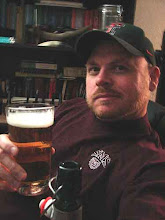At least the conference was great! Here is my proposal:
Mining YouTube to Research “Real-World” Intercultural Communication Contexts for the Service-Level Technical Writing Classroom
Abstract
Analyzing and articulating different audiences is a significant challenge for students of technical communication. Teaching intercultural writing to beginning technical communication students can often seem manufactured and artificial. By exploring cultural expectations in “real-world” contexts, instructors of technical communication can provide these future practitioners of technical writing the tools necessary to identify and articulate specific targeted audiences within a global environment.
This paper/presentation examines how to best use YouTube, a popular video sharing website on which both companies and consumers can upload and view videos, to study and identify differing intercultural “real-world” communication contexts. To do so, I will first explore Edward Hall’s heuristic of High- and Low-context cultures and how culture is manifested in his “situation frame”, the smallest identifiable unit of culture. Next, I will demonstrate where to find and how to use videos posted on YouTube to provide insight to technical writing students into the cultural norms and expectations of a given, targeted, cross-cultural audience. Finally, I will explore how to synthesize the cultural research conducted by students on YouTube with Hall’s heuristic of High- and Low-context into explicit writing strategies to a targeted, “real-world” audience.
Essentially, I introduce Edward T. Hall's heuristic of High/Low Context and demonstrate how students can collect data from cultures by analyzing primary sources: TV commercials. Using Hall's model, students can conduct analysis on these commercials and construct rhetorical strategies--based on Hall's model--to reach their targeted audience. For instance, this commercial is targeted to Americans:
Here you can see how the authors demonstrate the features, explain the rationale behind everything, and privilege the technology--all signs of a Low Context culture. Now look at this commercial for French consumers:
This commercial is different in that it focuses on human relations, unspoken rules of behavior, and the technology is not privileged--all signs of a High Context culture. Although this is a simplistic example, students can learn more by searching more commercials or focusing on one product and researching how this product is marketed to different cultures.
Here are my slides:
If you are so inclined, or if you suffer from insomnia, you can read more about my conference presentations at Academia.edu.
-Safari Bob


















No comments:
Post a Comment